At constant temperature, Georg Ohm discovered that the electrical current flowing through a given linear resistance is proportional to the voltage placed across it and inversely proportional to the resistance. Ohms Law is based on the relationship between voltage, current, and resistance.
The link between electric current and a potential difference is described by Ohm’s law. In most conductors, the current is exactly proportional to the voltage applied to them. Georg Simon Ohm, a German scientist, was the first to verify Ohm’s law by experiment. In this article, we will discuss Ohm’s law in detail, the students must bookmark this page to get all the updates.
Ohms Law Statement
Ohm’s Law is a fundamental principle in electrical engineering and physics that relates the voltage (V), current (I), and resistance (R) in an electrical circuit. It is typically stated as:
V = I * R
Where:
- V represents the voltage across a component or the entire circuit (measured in volts, V).
- I represent the current flowing through the component or the entire circuit (measured in amperes or amps, A).
- R represents the resistance of the component or the total resistance in the circuit (measured in ohms, Ω).
In simple terms, Ohm Law states that the voltage across a component is directly proportional to the current flowing through it, and this relationship is inversely proportional to the resistance of the component or the circuit. This law is named after Georg Simon Ohm, a German physicist who formulated it in the 1820s.
Ohm Law is based on the relationship between voltage (V), current (I), and resistance (R). The link between electric current and a potential difference is described by this law.
Ohm’s Law Formula
Below we have given the formula of Ohm’s law by using the formula given below students can calculate the value of Voltage, Resistance, and Current.
This shows voltage is directly proportional to current.
V = Voltage or potential difference of conductor
I = current flowing through the conductor
R = Resistance
We can find current by the above formula if voltage and resistance are given.
We can find the resistance using the above formula if we know voltage and current.
Ohm’s Law Derivation
According to Ohms law, If the conductivity and other physical conditions (length, cross-section, material, etc.) are unchanged, the current flow through a conductor is proportional to the potential difference across the conductor.
Let AB be a conductor. The potential at the A end of the conductor is VA and the potential at the B end is VB. Assume, Va > VB |
Hence, current will flow from A to B in the conductor. If the current is I, then according to Ohms law,
(VA – VB ) ∝ I [If development and other physical conditions remain unchanged]
Or, VA-VB = RI [R = constant]
Or, V = RI [If VA – VB = V is assumed.]
Or, I =V/R
Resistance of the conductor refers to this constant R. If the terminal potential difference of the conductor is unchanged, the resistance of the conductor decreases with a large current, and the current increases with decreasing resistance.
Ohm’s Law Experiment
The following experiment makes it simple to confirm Ohm’s Law:
Equipment needed: Resistor, Ammeter, Voltmeter, Battery. Plug Key, Rheostat
Process
1. The rheostat is initially set to get the lowest reading in the ammeter A and voltmeter V while the key K is closed.
2. By adjusting the rheostat’s sliding terminal, the current in the circuit is progressively increased. The procedure involves recording the current flowing through the circuit and the accompanying potential difference across the resistance wire R.
3. On this basis, various sets of voltage and current values are derived.
4. The ratio of V/I is computed for each set of V and I values.
5. You’ll see that the ratio V/I for each scenario is nearly identical when you compute it. V/I hence equals R, a constant.
6. Create a graph that contrasts the current and potential.
Ohm’s Law Diagram
the formula of ohm’s law by using the procedure given below students can calculate the value of Voltage, Resistance, and Current.
Ohm’s Law in Vector Form
Ohm’s law in vector form is J=σE
This is ohm’s law in vector form
where J = current density
E = potential gradient
σ = conductivity
Concept of Resistance from Ohm’s Law
If the potential difference across the conductor is V, the current in the conductor is I and the resistance of the conductor is R, from Ohm’s law, R = V/I
Therefore resistance = (the potential difference between the two ends of the conductor) / ( the current flow through the conductor.)
So, the definition of resistance from Ohm’s law is the ratio between the potential difference between the two ends of a conductor and the current flowing through the conductor is called the resistance of that conductor.
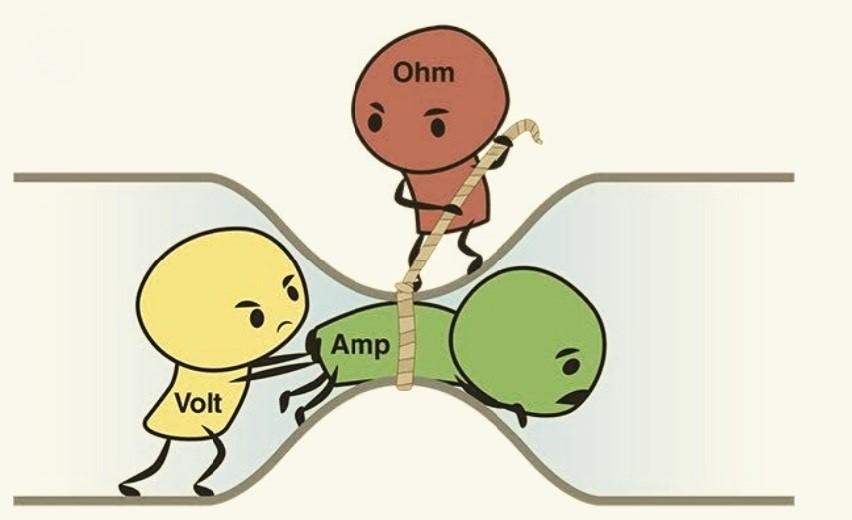
Unit of Resistance
The unit used in the measurement of Resistance is the ohm ( Ω )
If a potential difference of 1 volt is applied across a conductor and the current through the conductor is 1 ampere, then the resistance of that conductor is called 1-ohm resistance.
1 ohm ( Ω ) = 1V / 1A
Definition of Power from Ohm’s Law
Electric power is the rate of energy conversion from the electrical energy of moving charges to other forms of energy such as mechanical energy, heat energy, energy stored in magnetic fields, or energy stored in electric fields.
The unit of Power is watt.
Using Ohm’s law and the values of voltage, current, and resistance as substitutes, the electrical power may be determined.
P= VI [ When Voltage and current are provided]
P= v²/ R [ When Voltage and resistance are provided
P=I² R [ [When current and resistance provided]
Ohm’s Law: Pie Chart
Here is a pie chart given by which students can easily find out the value of different variables such as current (I), Resistance (R), Power (P), and Voltage (V).
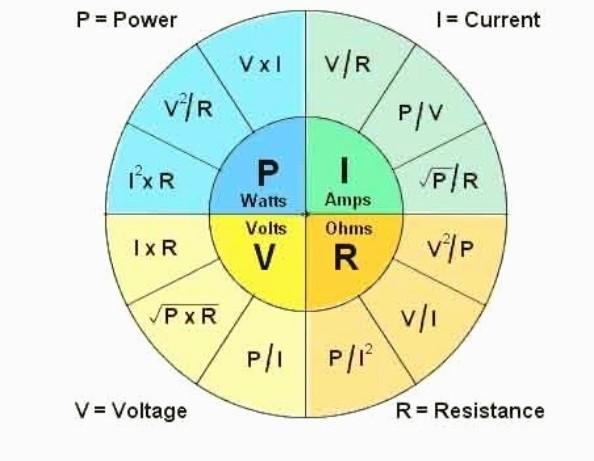
Ohm’s Law: Relationship Between Current, Voltage, and Resistance
Here we will check the resistance on different voltages and currents, have a look at the table given below.
| Voltage(V) |
Current(I) |
Resistance(R) R = V/I |
| 0.5 |
1 |
0.5 |
| 1 |
2 |
0.5 |
| 2 |
2 |
1 |
| 3 |
1 |
3 |
| 4 |
2 |
2 |
| 6 |
2 |
3 |
| 8 |
2 |
4 |
| 10 |
2 |
5 |
| 12 |
3 |
4 |
| 14 |
7 |
2 |
| 16 |
4 |
4 |
| 18 |
9 |
2 |
| 20 |
10 |
2 |
| 15 |
7 |
2.5 |
| 14 |
2 |
7 |
| 22 |
11 |
2 |
| 13 |
2 |
6.5 |
| 11 |
2 |
5.5 |
| 19 |
2 |
9.5 |
Ohm’s Law for a Magnetic Circuit
Ohms law for magnetic circuits is F=ϕS.
Explanation: Ohm’s law for magnetic circuits states that the MMF is directly proportional to the magnetic flux whereas reluctance is the constant of proportionality.
Ohms Law is Applicable to
Ohm’s law is true for all metallic conductors at low temperatures. “In metallic conductors at constant temperature and zero magnetic fields, the current flowing is proportional to the voltage across the ends of the conductor, and is inversely proportional to the conductor’s resistance,” according to Ohms Law.
Ohm’s Law Limitations
•Electrical components that only allow one direction of current flow, such as diodes and transistors, are not subject to Ohms law.
•Ohm’s law does not apply to electronic valves (diode valves, triodes), semiconductors (germanium, silicon, etc.), electrolytic materials, and gasses under low pressure i.e. non-ohmic conductors
Ohm’s Law Applications
Ohm’s law is widely used in various fields. Check some of its uses below.
- If we figure out a circuit’s voltage, resistance, or current using ohms law.
- The desired voltage drop across the electrical components is maintained by Ohm’s law.
- In DC ammeters and other DC shunts, the current is also redirected using Ohms law.
Ohm’s Law Solved Questions
Below we have given examples of ohms law the students preparing for boards, competitive exams, or engineering entrance exams must know the applications of ohm’s law. Below we have given some examples because numerical questions can be asked on ohms law.
Hence, the students must solve the questions and before jumping on questions the students must know the concept of ohm’s law. Physics is all about concepts and is numerically based on those concepts. Thus, the students must not rely on theory in physics, they must solve questions based on the concepts of ohm’s law.
Q.1 In a circuit, a battery of 20 volts is connected and the current flow through that circuit is 10 ampere. Find out the resistance connected in the circuit.
Ohm’s law states that
R = V/I
Given, that the Voltage of the circuit is 20 volts.
The current flowing through the circuit is 10 ampere
By using ohm’s law, Resistance of the circuit(R) = 20/10
Resistance of the circuit(R) = 2 ohm
Thus, the resistance connected in the circuit is 2 ohm
Q. In an electric circuit, a 12-volt battery is connected with resistance. The value of resistance is 6 ohms. Find the current flowing through the circuit.
Ohm’s law states that
I = V/R
Given, that the Voltage of the circuit is 12 volts.
Resistance connected in an electric circuit is 6 ohms.
Find: Current flowing through the electric circuit I =?
By using ohms law
Current flowing through the electric circuit I = V/R
current flowing through the electric circuit I = 2 amp
Thus, the current flows through the electric circuit 2 amp.
Q. A 12 amp current is flowing through an electric circuit and a battery of V volt is connected to the circuit. The resistance of 0.5 ohms is connected in series with the battery. Find the value of V?
Ohm’s law states that
V= IR
Given the current flowing through the electric circuit I = 12 amp
Resistance connected in series to the battery = 0.5 ohms
Find: Voltage V =?
By using the law of Ohm
The voltage of the Battery V = IR
The voltage of the Battery V = 12*0.5
The voltage of the Battery V = 6 V
Sharing is caring!
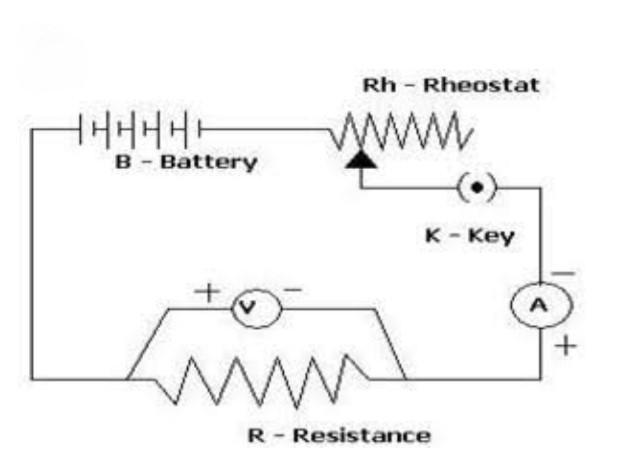



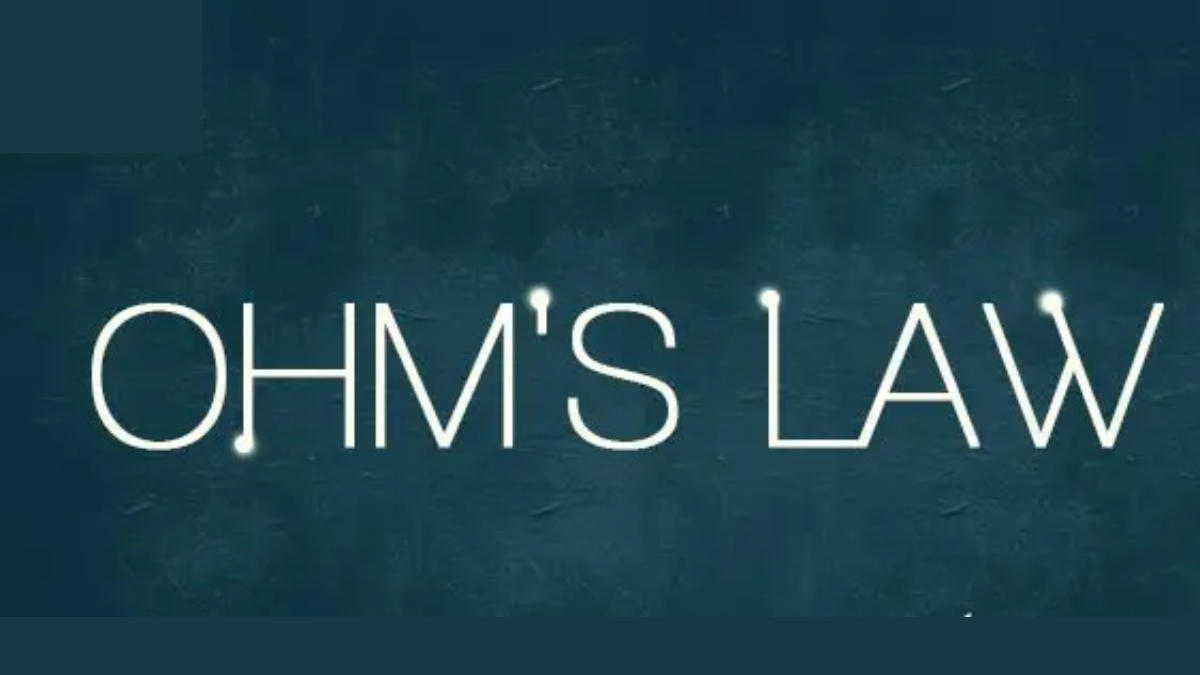

 CBSE Class 12 Physics Viva Questions wit...
CBSE Class 12 Physics Viva Questions wit...
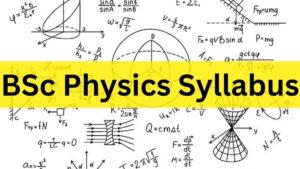 BSc Physics Syllabus 2025: Check Year Wi...
BSc Physics Syllabus 2025: Check Year Wi...
 Physics Investigatory Project Class 12: ...
Physics Investigatory Project Class 12: ...










